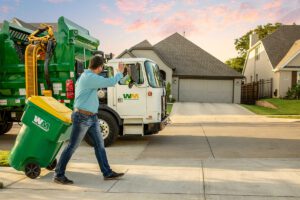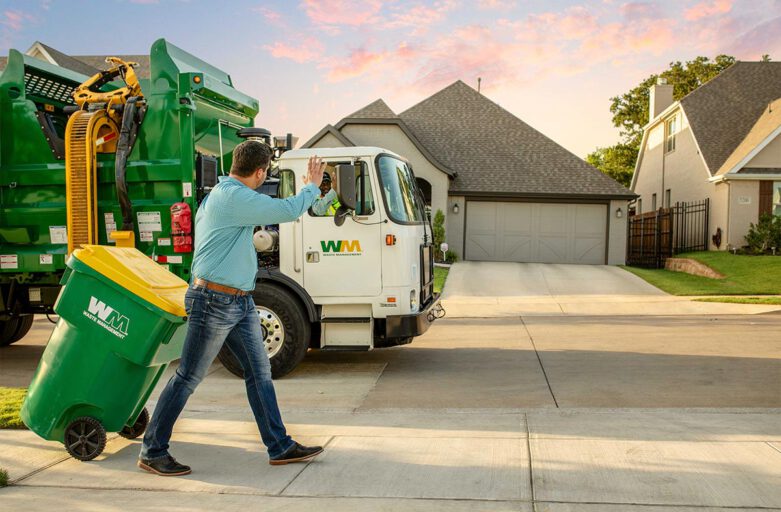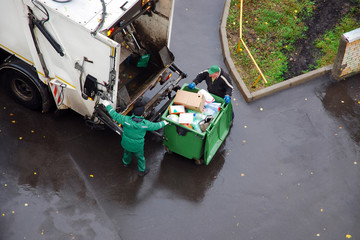Rubbish Removal Perth helps you dispose of all your junk. Whether you have a large pile of trash or just a few items, these professionals can get rid of it quickly and safely.
Garbage is a huge problem if it needs to be disposed of properly. It can become a breeding ground for microorganisms, flies, and mosquitoes, which cause many diseases.

When hurricanes and strong winds come along, they can knock down trees or break off many branches. This debris can pile up quickly and be difficult to deal with. It can also be dangerous, especially if it blocks the street, sidewalk, or alleyway. The best thing to do is to hire a rubbish removal service to carry it away for you. Then, you can ensure the pile of tree limbs is kept from blocking your property and causing further damage. The other option is to chop it up and use it for mulch or burn it (if allowed). It can help keep the grass healthy and prevent weeds from sprouting on the property. It can also provide shade and make the area more pleasant. The best part is that it won’t attract insects, toadstool, or fungus, which can eat the leaves and bark of the tree.
Rubbish is non-putrescible solid waste (excluding ashes), consisting of combustible and noncombustible materials such as paper, rags, cartons, boxes, wood, excelsior, rubber, leather, yard trimmings, metal furniture, tin cans, glass, and pottery. It also includes demolished material, tires, and other similar items.
Sometimes, you may leave your rubbish by the curb for the local garbage pickup services to pick up and dispose of. It’s important to call and ask first, however, as some garbage collection companies charge for large rubbish (like mattresses) or have specific rules and regulations on what they can pick up.
Biodegradable rubbish breaks down naturally in the environment – for example, food waste can be composted at home or on an industrial scale to produce electricity. In contrast, nonbiodegradable rubbish can take hundreds of years to break down and contaminate soil and water resources. It also produces methane and carbon dioxide, which are dangerous to human health. In addition to this, it can entangle and kill wildlife.
Household waste is a form of solid rubbish that is generated in the daily routine of living. It is also known as domestic waste and residential waste. This type of waste is a source of potential health hazards and environmental risks if improperly disposed of. Therefore, it is important to understand the different types of household waste and how to get rid of them safely and efficiently.
A rubbish removal company can help you with all your trash disposal needs. They can provide various rubbish removal services, including disposing of household garbage and furniture. They can also recycle your household waste. This will benefit the environment and help reduce your energy costs. They will also help you save on landfill space.
Most items in the rubbish piles at households and buildings are reusable. For instance, most paper materials, clean cardboard, electronics, small and large appliances, glass items, plastics, metals, and more can be recycled. However, it would be best to find a recycling center or a waste disposal bin to dispose of these items correctly.
Other things that are found in the rubbish piles in households include paint, pesticides, cleaning chemicals, and batteries. These can be toxic if they are ingested or inhaled. They can also react with other materials in the rubbish to form harmful gases. For this reason, it is vital to separate these from other rubbish and take them to a hazardous waste disposal site or recycling depot.
In some countries, they are using innovative ways to deal with this growing problem. For example, a plant in Tripoli is exploiting household waste and turning it into organic fertilizer. In addition, they are using technology to control the residues produced by this process.
It is important to know what type of rubbish you are throwing away each day. It is important for the safety of your family and others around you. In addition, it is important to recycle what you can to keep the world safe. Keeping these facts in mind, you can make the right decisions about what to throw out and how.
Recycling is a modern process that converts waste materials into reusable goods. It reduces the need to extract raw materials from the environment and saves energy. It also helps lower greenhouse gas emissions from incineration and prevents air pollution and water contamination from landfilling. Recyclable materials include glass, paper, metals, plastics, textiles, and batteries. It is an important component of modern waste reduction, along with reuse and composting.
The global recycling market is worth an estimated USD 3 trillion. This figure is expected to grow to more than 5 trillion by 2025 as more countries adopt a zero-waste policy and invest in recycling technology. In addition, the market is driven by increasing demand for recycled products such as electronics, construction materials, and automotive parts.
Although the recycling market is growing, many challenges must be overcome to ensure the success of this process. For example, it is challenging to make recycling economically feasible without consumer participation. Consumers need to be educated about what can and cannot be recycled, as well as how to sort their waste materials properly. This can be done by organizing public events, campaigns, and brochures.
Another challenge is the need to create a sustainable infrastructure for recycling. Local authorities should establish recycling centers that provide a variety of recycling options. These may include buy-back centers, where consumers are paid for their waste; drop-off centers, where waste is collected without payment; and curbside collection, where households sort their waste at home.
Moreover, recycling must be integrated into community life. It should be promoted in schools, businesses, and government offices. Governments should also establish incentives and policies to encourage recycling. This can be done by raising taxes or offering contracts to companies that divert more of their waste for recycling.
In Malawi, women like Muhondo and Catherine Chitokoto are working to reduce the country’s garbage problem by transforming waste into different products. They use waste to make biomass fuel, fire briquettes, door mats, and organic compost, which they sell within their communities to ease the financial struggles of low-income families.
The cost of a junk removal service can be less than you think. When you calculate your monthly overhead, include items such as rent, utilities, and payroll. Then, divide this figure by the billable hours you expect to work each month. This will give you your hourly rate. Then, you can use this amount to calculate your pricing.
When you’re planning a price, be sure to consider the size of your trucks and the distance between the job site and the disposal facility. It would be best if you also decided whether to charge by weight, volume, or the truckload. Research how much your competitors assess and determine how competitive you want to be.
In addition to recycling, junk removal services can donate items to charities and nonprofit organizations. They can also help you dispose of electronics, scrap metal, and other unwanted materials. Many junk removal services also offer free dumpster rentals for commercial clients.
Another option for reducing your waste is to rent a storage unit or warehouse. This can help you organize your junk and store it safely. You can hire a junk removal company to haul it away when you need to clear space. It’s a good idea to label your boxes and other containers when you start collecting junk. This will make it easier to identify what needs to be hauled away and what can go in the recycle bin.


